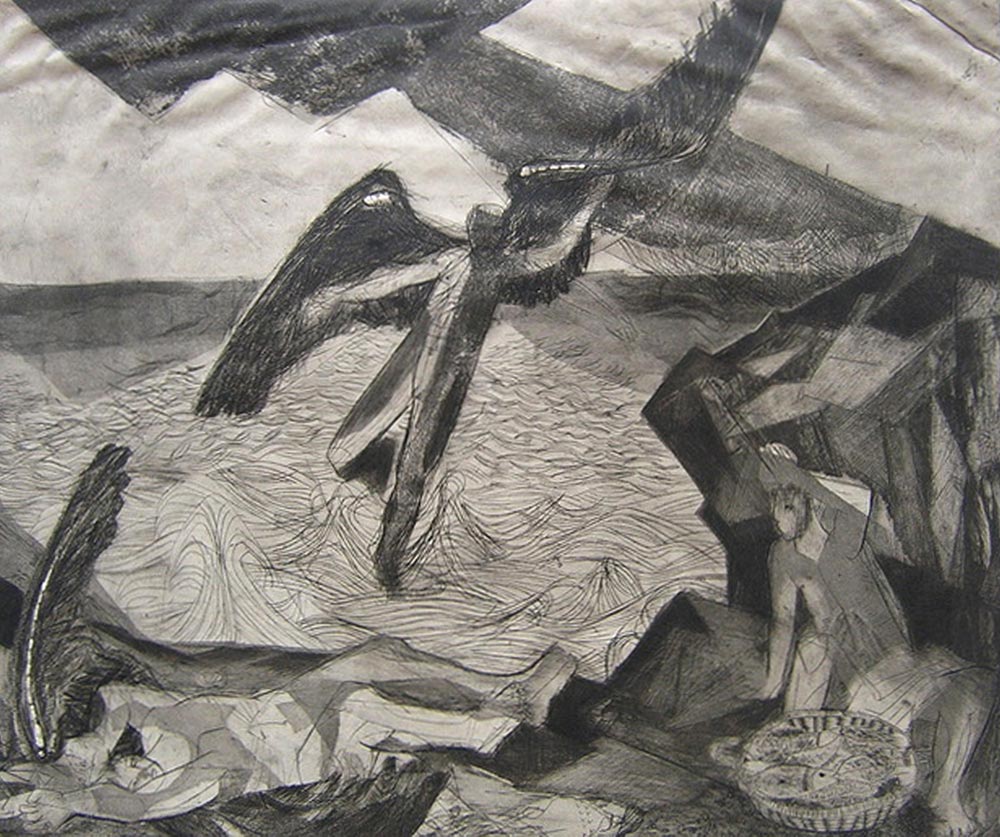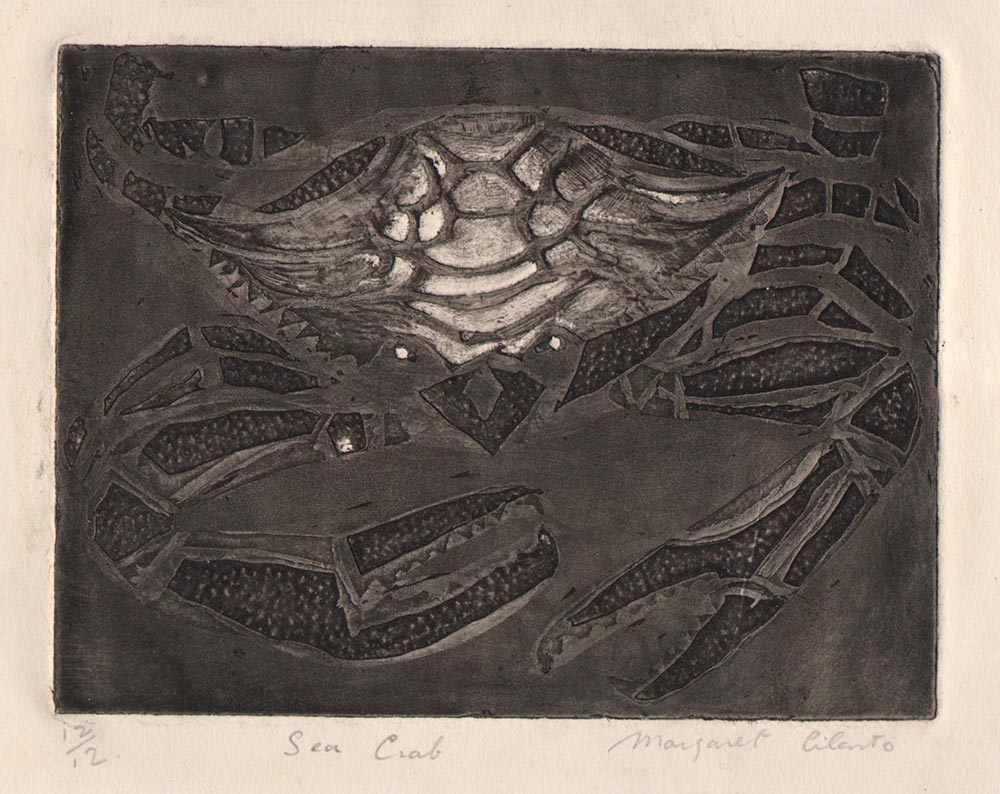17. Margaret Cilento
| Life Dates | 1923-2006 |
| Place of Birth | Sydney, Australia |
| Place of Death | Seaford, Australia |
| Birth Name | Margaret Cilento |
Margaret Cilento was the eldest daughter and second child born to Sir Raphael and Lady Phyllis Cilento, both prominent doctors and policy advocates in Australia. Cilento suffered from deafness as a child, which contributed to her early gravitation toward the visual arts. She began formal art studies in high school at Sommerville House in Brisbane and continued at the East Sydney Technical College, from which she graduated in 1945.1 The Australian art scene was divided at this moment between the conservative, government-backed Australian Academy of Art and more progressive opposition groups such as the Contemporary Art Society and Sydney Group, founded in 1938 and 1945, respectively. Although Cilento exhibited with the former group on several occasions, her in-depth exposure to avant-garde styles did not occur until she reached New York in 1947. Fellow Australian and Atelier 17 member Anne Wienholt encouraged Cilento to come to New York, where her father was serving as the United Nations Director for Refugees and Displaced Persons. Cilento won the Wattle League Scholarship funded by the Half Dozen Group, Brisbane, which covered her tuition expenses at Atelier 17 but did not provide for travel and lodging, and so she lived with her family. After a two-year introduction to the city’s postwar art community—studying at Atelier 17, the Subjects of the Artist School, and Rufino Tamayo’s class at the Brooklyn Museum of Art—Cilento departed in 1949 with her family for Europe. She worked as a monitor in Atelier 17’s newly reopened Paris studio before returning to Australia in 1951, suffering from hepatitis. The prints Cilento made at Atelier 17 across these years range from semi-abstract portraits, animal studies, and representations of mythical subjects, to fully abstract, expressively rendered plates, as seen in her spatial study Abstraction (1947) and three uniquely inked proofs of Abstract Expression (1947).2 From 1954 to 1965 she lived abroad again in London, where she studied at the Central School of Art at Goldsmith’s College and met her husband, Geoff Maslen, whom she married in 1963. The couple returned to Australia shortly thereafter, and Cilento continued to work as an artist, with a particular focus on portraiture of her children and expressive representations of the human body. She maintained a printing press in her home studio but worked mostly in oil paint.3
Selected Bibliography
“Brisbane Artist ‘Back from Mars.’” Courier-Mail, August 14, 1951.
“Exhibition of Margaret Cilento’s Work.” Sun. August 26, 1953.
“‘Half Dozen’ Scholarship to Miss Cilento.” Telegraph. February 21, 1947.
“Margaret Cilento (Obituary).” The Telegraph, January 19, 2007. (accessed October 22, 2012).
“Margaret Cilento’s Art.” The Daily Telegraph. August 26, 1953.
“Miss Cilento Wins Paris Scholarship.” Sydney Morning Herald, October 24, 1950.
“Paintings by Margaret Cilento.” Sydney Morning Herald, April 24, 1952.
Savage, Jude. “Atelier 17 and Australian Women Artists in New York: Margaret Cilento at Home and Abroad, 1946-1965.” M.A. thesis, The Australian National University, 1995.
Young, Elizabeth. “Cilento Art Is ‘Good Augury.’” Courier-Mail. March 19, 1951.
Notes
- The most complete record of Cilento’s career can be found in Jude Savage, “Atelier 17 and Australian Women Artists in New York: Margaret Cilento at Home and Abroad, 1946–1965” (MA thesis, Australian National University, 1995). ↩
- The National Gallery of Australia in Canberra, has a substantial collection of Cilento’s prints, acquired through the Gordon Darling Australasian Print Fund. ↩
- Geoff Maslen to Christina Weyl, 24 January 2018. ↩



